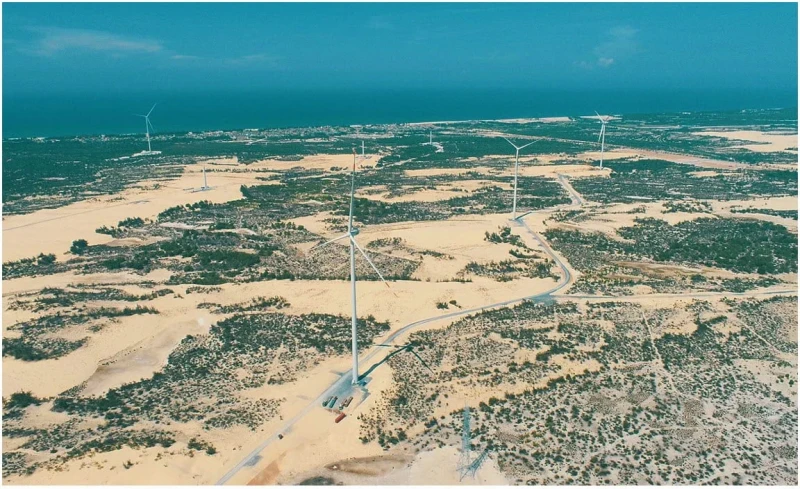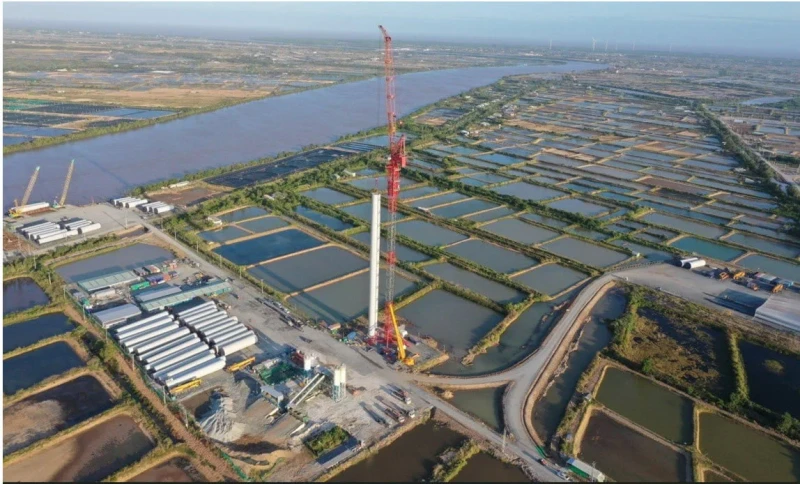Research & Practice: Onshore Wind Turbine Foundation Design in Vietnam
Research & Practice: Onshore Wind Turbine Foundation Design in Vietnam
Written By: Dr. Ho Duc An, FECON CorporationUploaded At: 01 May 2024

As Vietnam races to meet its ambitious COP26 net-zero commitment by 2050, wind power is emerging as a major contributor to the energy mix. In 2018, Decision 39 raised the wind FIT to $0.085/kWh for onshore and $0.098 for offshore wind for projects that came online by November 1, 2021. This attracted investment: Vietnam’s wind capacity rose 10-fold from several project less than 250 MW in 2018 to 84 projects with 3,980 MW by November 2022, and another 37 projects with 2,500 MW of capacity waiting to connect to the grid .
The rapid growth of the wind power projects in Vietnam has showed its strong capacity in supply chain management and a great interest and effort from relevant stakeholders including Government authorities, Owners, Designers, and the Contractors. During that course, Geotechnical Engineers has learnt many experiences and knowledge related to the WTG Foundation Design and Construction. The Geotechnical Engineer who plays an important role in decision-making about the technical solutions of the Project, has to deal with many complex implications in relation with the WTG Design and Construction.
The Geotechnical Engineer understands that the design process shall have to go through four-steps: (1) geological investigation and interpretation of geotechnical properties (2) preliminary WTG foundation design solutions (3) geotechnical design; and (4) structural design.
Geological investigation
During the project planning phase, a preliminary geotechnical investigation is conducted across the project site to identify potential geotechnical site risks, to propose preliminary design and the budget associated for the purpose of project development. This is for the purpose to refine the scope for the final geotechnical investigation. During the engineering design phase, a complete geotechnical site investigation is required to finalize the design and provide the necessary geotechnical properties for detailed design of the foundation at each specific turbine position.
Preliminary WTG foundation design solutions
The selection and design of a wind turbine foundation is largely dependent on the soil conditions prevailing at the proposed turbine site. The foundation for WTG in Vietnam can be one of the following options:
- Gravity foundation: a gravity foundation is typically preferred when the soil layers at shallow depths exhibit competent strength and deformation capacity to resist the loads transferred from the turbine tower. The gravity foundation is often found in the Central of Vietnam (Quang Tri, Quang Binh, Binh Thuan, Ninh Thuan,…) or in the Central Highlands of Vietnam (Tay Nguyen).
- Gravity foundation combined with soil stabilization: if the soils underneath the foundation does not have the necessary properties, a soil stabilization can also be applied to improve stiffness, shear strength, permeability, or homogeneity of the soil underneath. This can be done through soil replacement, dynamic compaction, stone column, rigid inclusion, cement deep mixing. This solution is normally applied for limited weak/soft soil depth (i.g: with soft soil’s depth less than one time diameter of the WTG Foundation). In this case, a comparative cost-and-time between different stabilization techniques and with the pile foundation shall be made to choose most appropriate solution.
- Piled foundation: a piled foundation transfers the load from the WTG tower to the competent soils at a greater depth and is proposed when soils stabilization techniques are neither possible nor they become too expensive. Piles can be spun prefabricated pile or bored piles. This solution can be found in some project sites in the Central of Vietnam or in the Central Highlands of Vietnam. Especially, it is typical solution for the WTG Foundation in the Southeast or Mekong River Delta, where soft soil condition is dominant.
- Other type of WTG foundation for example Anchor foundation is not yet applied in Vietnam.

Thai Hoa project: Gravity foundation (Courtesy to FECON Corporation)

B&T Quang Binh Project: 60 WTG turbines building over-sclale project site with different WTG Foundation type : Gravity foundation, Gravity foundation combined with vibro-replacement , PHC Piled Foundation, and Bored piled foundation (Courtesy to FECON Corporation)

Lac Hoa & Hoa Dong project: wind farm, including PHC pile WTG foundation, internal road system, hardstand, jetty and laydown area built in soft-soil condition up to 40m.
Geotechnical Design
If geological conditions conditioned the type of the WTG foundation, the input data from the turbine supplier determines the size and detailed design of the WTG Foundation. This input data includes loads and load combinations, along with static and dynamic stiffness’s requirements and allowable vertical and differential displacements. In brief, the design criteria of WTG foundation can be indicated as follows:
- ensuring total settlement at the center of the foundation does not exceed 25 mm;
- differential settlement due to the influence of geological conditions should not exceed 3mm/m;
- having enough horizontal and rotational stiffness, which is specified to each project site and each turbine model defined by the Turbine supplier.
- ensuring soil bearing capacity.
Structural Design
Once geotechnical design is completed, the structural design shall be carried out to ensure structural integrity for different limit stages design (Ultimate limit state, Serviceability limit state, Fatigue limit state).
Considering these four-steps, the Geotechnical Engineer is requested to have a clear understanding of the turbine supplier’s specifications, design standards and specifications, construction method specified to each local conditions, and natural ground conditions: topography, hydrological, geological conditions, among others. In addition, since a wind farm is normally built over a large-scale complex terrain, with varying geological, hydrological conditions, the Geotechnical Engineer has to deal with many challenges: i.g how to predict the ground water level over a large-scale, especially at WTG locations; how to consider negative skin friction in soft soil, how to drive PHC piles through stiff soil layers down to designed depth, …
Beside the WTG Foundation, the wind farm also includes an internal roads system that connecting WTG locations together and that is for transportation of over-size and over-weight WTG’s components; it also has hardstand, a high-risk area where lifting cranes being used to install the WTG’s components. These need a particular attention of the Geotechnical Engineer. Building a windfarm is at the same time an interesting, but challenging job for the Geotechnical Engineer. Through that, he can build his knowledge, problem solving skill and creativity in Geotechnical Field.
Reference
- This is part four of six web stories produced by the Stimson Center and IUCN under the Swiss Agency for Development and Cooperation BRIDGE (Building River Dialogue and Governance), a global hydro-diplomacy project that IUCN is facilitating in 15 transboundary river basins, including the Mekong. https://www.iucn.org/news/viet-nam/202205/opportunities-and-challenges-expanding-wind-vietnams-electricity-mix
- CFMS (Comite Francais de Mecaniques des Sols and de Geotechnique) (2011), Recommendations for the design, calculation, installation and inspection of wind-turbine foundations.
- DNV/Risø (2002), Guidelines for Design of Wind Turbines
- Wind Energy Generation Systems – Part 6: Tower And Foundation Design Requirements.
- API-RP-2GEO (2011) Geotechnical and Foundation Design Considerations